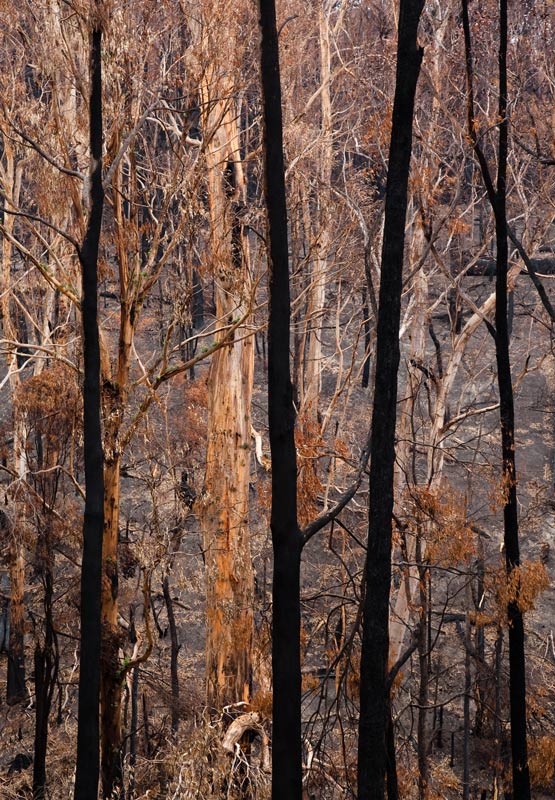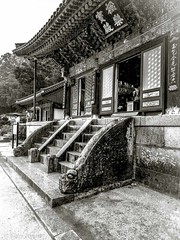Whilst most of us were not directly affected by the bushfires, we all have been horrified by the images that came from that day and the many eye witness accounts of lucky survival, and of those less fortunate.
The outpouring of empathy and compassion has meant many of us have donated hundreds if not thousands of dollars or, in many cases our free services to help rebuild the lives of those affected.
Understandably, the locals from the bushfire regions still in the grief phase from their losses are often polarised or at least have ambivalent emotions at the prospect of “outsiders” coming to their towns now that most of the roads have been opened to the public.
On the one hand, those lucky enough to still have ongoing businesses in the region are desperate for tourists to get back there so they can manage through these difficult times, as well as wanting the visitors to see for themselves how severely devastated the region was, and that it wasn’t just media hype.
Others, who are going through anger, blame or perhaps guilt phase of their grief reaction and who have little to directly benefit from outsider’s presence, may have a less than appreciative attitude to them even though these same people may have made personal financial contributions well in excess of what was expected. Many just want to be left alone, others apparently seem embarassed that their property is now a unsightly mess, while others have concerns that unscrupulous outsiders may want to exploit the conditions, steal from the damaged properties or just be disrespectful.
A local female photographer’s efforts to bring photo-tourists to the region provided they spend money there has highlighted the range of emotions currently evident towards the presence of tourists.
After posting this blog, The Age newspaper reported on a local who lost everything in the fire but decided to exhibit some of her burnt relics including a car which raised further emotions as to if it was too soon, or were the benefits in helping people come to terms with the tragedy more important.
But this event still remains as one of the most terrifying natural events in Australia’s history and warrants respectful documentation.
So with this background a friend and myself made two visits to the region over the past 2 weeks, ensuring we spent money there, and to be conservative, we decided not to photograph when others were around and only to take a couple of shots of actual house ruins, ensuring we did not trespass on any private property, while concentrating on the effect of the fire on the previously majestic rain forests which once were full of life.
If you want to see the human face of the tragedy, see ABC TV’s photo stories, videos, etc as I have purposely avoided this aspect to ensure I did not offend those still emotionally fragile in their grief.
It was interesting to see how differing intensities of the fires caused significantly different scars on the landscape.
The worst firestorms where even aluminium engine blocks melted, left the areas looking like a moonscape, barren grey ground with black trees – many of which had fallen – almost no leaves, no wildlife to be seen or heard even at 7 weeks apart from ants – and eeerily, not even the sound of a bush fly. The intensity of the fire will mean that it may take years before the chemistry of the top soil is restored.
NB. you can click on any of these images to see the larger versions.
but in many areas, some of the trees had survived and were sprouting new growth, although the tree ferns were too incinerated to survive.
While in the tall wet sclerophyll forests where the destruction was similar, quite curiously, some of the Eucalypts seem spared (perhaps < 5%) despite adjacent trees being burnt from the bottom to their tops (for those not understanding the scale of these tall mainly 70 year old trees (the region was destroyed in the 1939 fires), the segments shown are probably ~50-80m tall in the image – to understand our forests more see my page here) – although we can expect new seedlings to start soon, it will take another 70 years for this forest to look like it was before the fire – and that assumes climate change does not prevent our current drought from breaking – Mountain ash do not regenerate after bush fires but they do produce seedlings and if there is adequate rainfall and no major bushfires, these will reach 100m tall and mature over 100-300 years.
While the majority of gullies were still barren at 7 weeks with no green to be seen, after some 80km of gravel roads, I found one gully with a dry creek bed where the tree ferns had sprung back to life:
and new shoots miraculously appearing from the ash:
“Fall leaves”:
Although it is early Autumn in Victoria now, our evergreen Eucalypt forests do not change foliage color significantly – but in the bushfire regions where not all the leaves were incinerated, the remaining foliage had died leaving many areas with trees like this and their forest floor littered with the falling dead leaves contrasted with the ash.
Some of the forests had an amazing but deadly beauty – I must have spent 10 minutes under the massive tree trunk balanced precariously, just ready to fall on my head without realising it was there (see image below). Tragically a fire fighter assisting with the clean up soon after the fires died from a falling tree – and this is a real risk to those who would venture there before the clean up is finished. See here:
This particular forest near Toolangi was the only one where I heard a fly passing by, and the odd bird, while the bull ants were re-building their nests.
The fires tragically killed 173 people, and over 2000 houses were lost – but after visiting the once majestic forests where, in the worst affected, NOTHING survived apart from perhaps some ants – the deathly silence makes it easy to understand that over the extent of these fires, it is estimated that several million individual animals were killed or will perish because of the fires.
During the fires, even those who lost everything rushed injured wild life to aid suggesting to some that human spirit even in adversity is strongly linked to the welfare of animals.
After visiting the fires, I can’t help but feel for all those who were lost – both human and animal – just as when the planet Alderaan is destroyed in Star Wars – A New Hope, and Obi-Wan senses “a great disturbance in the Force, as if millions of voices cried out in terror and were suddenly silenced”. Please don’t take this as me being flippant, it’s just that this overwhelming sadness is what I feel when I’m there and this is what I thought of.
It is indeed a strange feeling one gets in the forests as your mind tries to put everything in its rightful place and imagine those creatures that once lived here only a few weeks ago.
It may be that some species unique to the area may have become extinct or close to it – hope is being held for the survival of Victoria’s state emblem – the lead beater possum which was only found in these areas.
If this has inspired you to go, please be respectful of the locals and their property, they need their space and need to feel secure, but the businesses also need you to keep them going, and above all, do not harm the fragile bush and be safe – Australian gum trees are well known for dropping large branches without warning, and now that risk is perhaps a 100-fold.
and this is a similar type of forest to what was devastated, they will be missed:



















As an Aussie I have never seen such distruction in my 77 years, yes I have seen others but this is the worst. The distruction the life it took and the animal life has been dreasful. To me it has torn my heart out and sitting here in my home seemingly safe and being able to do nothing for them except donate makes me feel inadiquate. I am sorry for the long comment but it does help me if no one else
Thanks Thelma, I think a LOT of people feel as you do.
Thanks for this photoessay, Gary. It had been a long time since I have been to the rainforests of Oz as I have been living here in Missouri now for quite a few years. I heard of the fires and all that and have friends who lives near where the bushfires happened. I am so hungry for Aussie news and I am glad that someone like you can write this very emotional photoessay. I still have tears in my eyes just by reading your account. I wish you and all Aussies well. Thanks again.
Thanks Isabel, I’m glad that you have got something from the essay. I love the forests and the wild life and spend many hours trekking through them – usually by myself which is not to be encouraged but it gives you a chance to become intuned with nature and to reflect on the big picture of life.
I understand that your countrymen in Red River region are fighting the opposite natural disaster – floods. It was strange that while the fires were raging in southern Australia, northern Australia were having their worst floods for many years too.
I hope the region is not too badly affected.
Perhaps climate change will increase the incidence of severe weather extremes, and it will just have to be something else we all will need to deal with – but perhaps the wild life will again be caught in the middle.
Thanks for your sensitive essay Gary, from one who lost his house in Kinglake. The trauma is still intense and recovery will take some time. I found your website while looking for information on recovery of Mountain Ash. I have many on my 20 acre propetry that were badly burnt. Most are black to about half way up but still brown above, with falling brown leaves. Some are exhibiting epicormic growth. I am trying to find out if this is a doomed “last gasp” or is recovery still possible? Any ideas?
Hi Peter, I’m really sorry for what you and your family are going through and it will take a long time to come to terms with.
As for the Mountain Ash, I understand that they don’t tolerate fire at all well, but I am no expert, and perhaps the epicormic growth is a sign survival is possible.
Given this web page: http://museumvictoria.com.au/forest/plants/ash.html which states Mountain Ash do not have epicormic growth – perhaps you may best consult the forestry department for advice?
Gary, what fantastic photo’s you take. I have never lived through a disaster such as this and my sympathy lies with the residents of these areas. I have however lived in a schlerophyl forest region of Sydney and witnessed many bushfires and the resultant graveyard of these forests. You have really captured this in your photo’s. Thank you.
Cas.
Thanks so much Gary . May I use one of your wonderful pictures … little ferns comingup from ash…(citing it is by you of course!!) on an internal document I am writing for my agency (a Womens Health Service in northern metro region?)I am both personally and preofessionally involved in bushfire recovery and your shots are a beautiful part of that healing.
I would like advice you the submit article service to make your stuff close to this good topic hot.